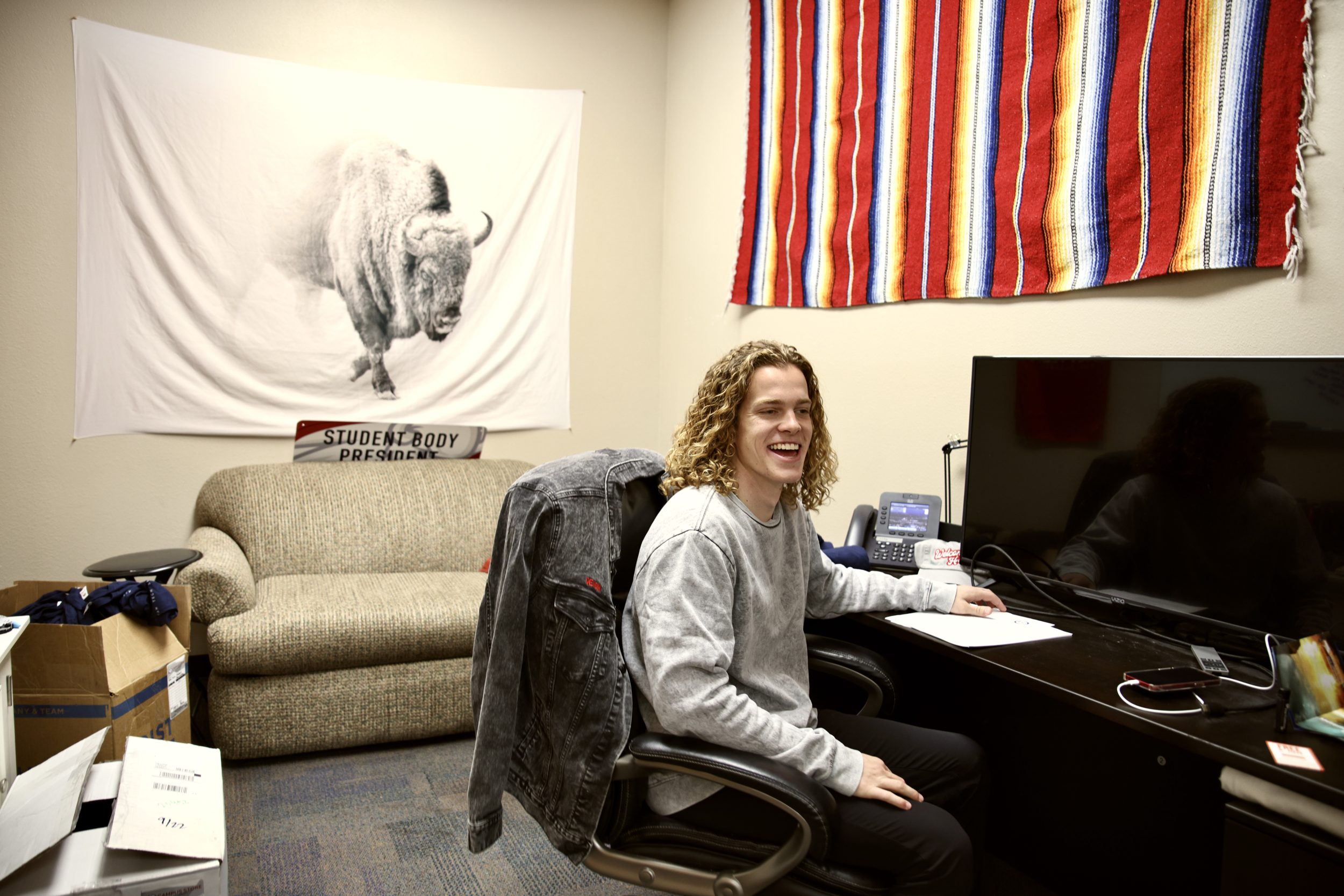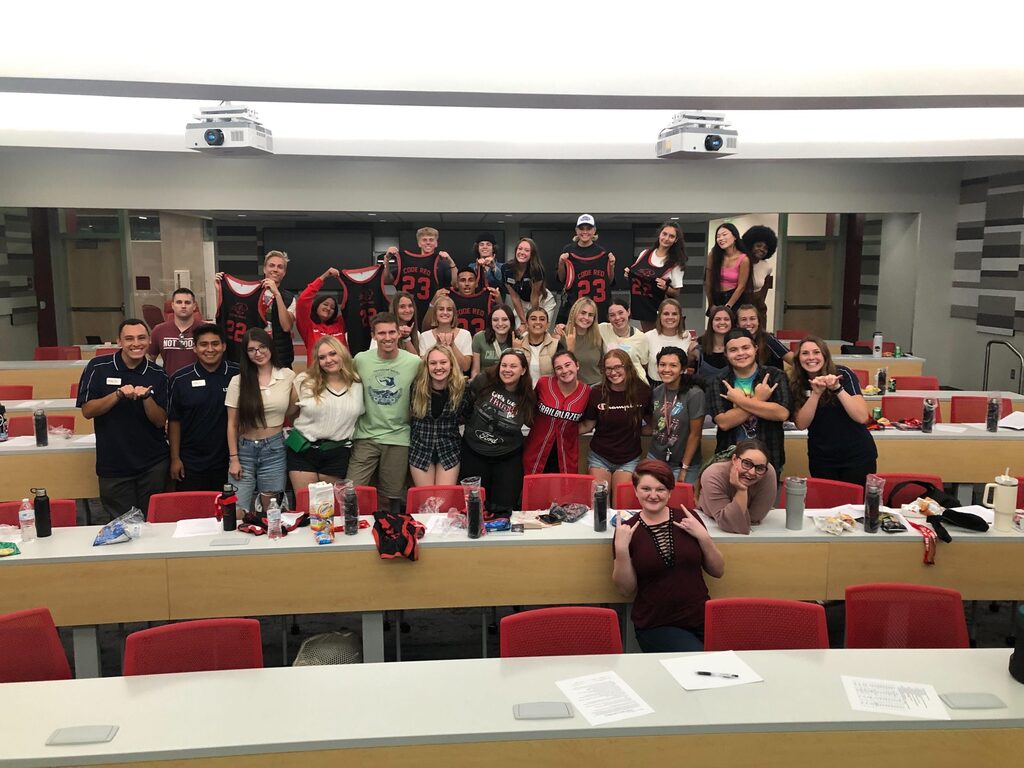Events are held every week at Utah Tech University. No matter the size of the event, great efforts are taken to plan for perfection.
Utah Tech Student Association is dedicated to providing memorable experiences for all students on campus. UTSA facilitates about 25 events a semester. Each event is thoroughly planned down to the smallest details to ensure the best experience for students, faculty and community members that are involved.
Vice president of student life Anna Barfuss, a junior recreation and sports management major from St. George, said UTSA normally works on about three events at a time with each event taking anywhere from 40 to 100 hours to plan.
“There is so much passion that goes into these events, and we notice every fine, little detail,” said student body president Devon Rice, a senior marketing major from Bountiful.
First and foremost, Utah Tech events are advertised through social media, flyers, A-frames boards and more to spread the word to the student body and community.
In order for each event to run as smoothly as possible, the final plans are normally submitted about eight weeks before the event is held.
Multiple entities of Utah Tech are contacted including:
- Guest Services to set up chairs, tables and tents
- Central scheduling to reserve spaces
- Risk management to assess and identify any possible risks
- Campus police department for events with over 300 people
Certificates of insurance, W9s and contracts are also required from anyone that comes on campus such as food trucks and performers.
Barfuss said safety meetings are held before large events take place. During this time, each organization is informed of what is needed and what can be expected. The meeting is later opened up for conversation.
UTSA develops sight maps for each event to visually plan and make the concepts come to life. These sight maps are time-consuming and not only take talent, but they also take attention to detail due to the accuracy that is needed.
“Sight maps are honestly one of the most impressive things that event directors do because they have to be as close to scale as possible,” Rice said.
These sight maps are especially important for larger events. Sight maps give an idea of what volunteers are needed and where.
Events that attract more students such as Chaos or the Foam Dance rely on volunteers to assist in all aspects such as security and check-in. QR codes are placed around campus to promote volunteering and provide an easy sign-up process.
To help with the volunteer aspect, Code Red was developed last semester. Code Red is a group of students that helps with each event. This also provides freshmen an opportunity to have experience before event planning.
Although no event goes exactly as planned, UTSA does all in its power to make sure the students leave with smiles on their faces and new friends.
“My team has a motto that is, ‘we hope for perfection, but we plan for problems’ because no event goes perfectly,” Barfuss said.
During the 2022 Foam Dance, the event was canceled about one and a half hours in due to lightning strikes nearby.
Unlike most universities in the state, UTSA agreed to hold the event once more the following night. Within about 12 hours, rentals were extended, new DJs were found and the UTSA members were ready to volunteer.
“The culture of UTSA is to make it happen,” Rice said. “We work with what we’ve got.”
Rice said one of the blessings and curses on the UTSA side of event planning is the heart and effort that is put into the events that students will never see.
Along with the extraneous efforts put in, Barfuss said an extra $12,000 was pulled from the semester event budget to hold the second Foam Dance.
“My semester budget is around $60,000, but when you’re planning 25 events for anywhere from 300 students to 5000 students, it can cost a lot of money,” Barfuss said.
Rice said the UTSA budget is low considering how much the organization does and how many students are actively catered to.
Only the larger events are ticketed due to the cost of the events. Ticketing larger events help students’ fees be reduced and helps the given budget last longer.
“All the funding and spending data is accessible to every student,” Rice said. “If any students want to know how much is spent, they can come and ask us.”
Although the numbers are not out for Chaos, Barfuss said the Foam Dance cost about $25,000 to $30,000.
Surveys are sent out after each UTSA event. Questions in the survey regard students’ experiences, what could be improved and what could be changed.
The responses from the surveys are used to gain an understanding of what went well and what can be improved. Barfuss said UTSA strives to elevate each event from the previous year.
“It’s incredible how much work goes into these events and how much all of us do as students to make it happen and make it great,” Rice said.




